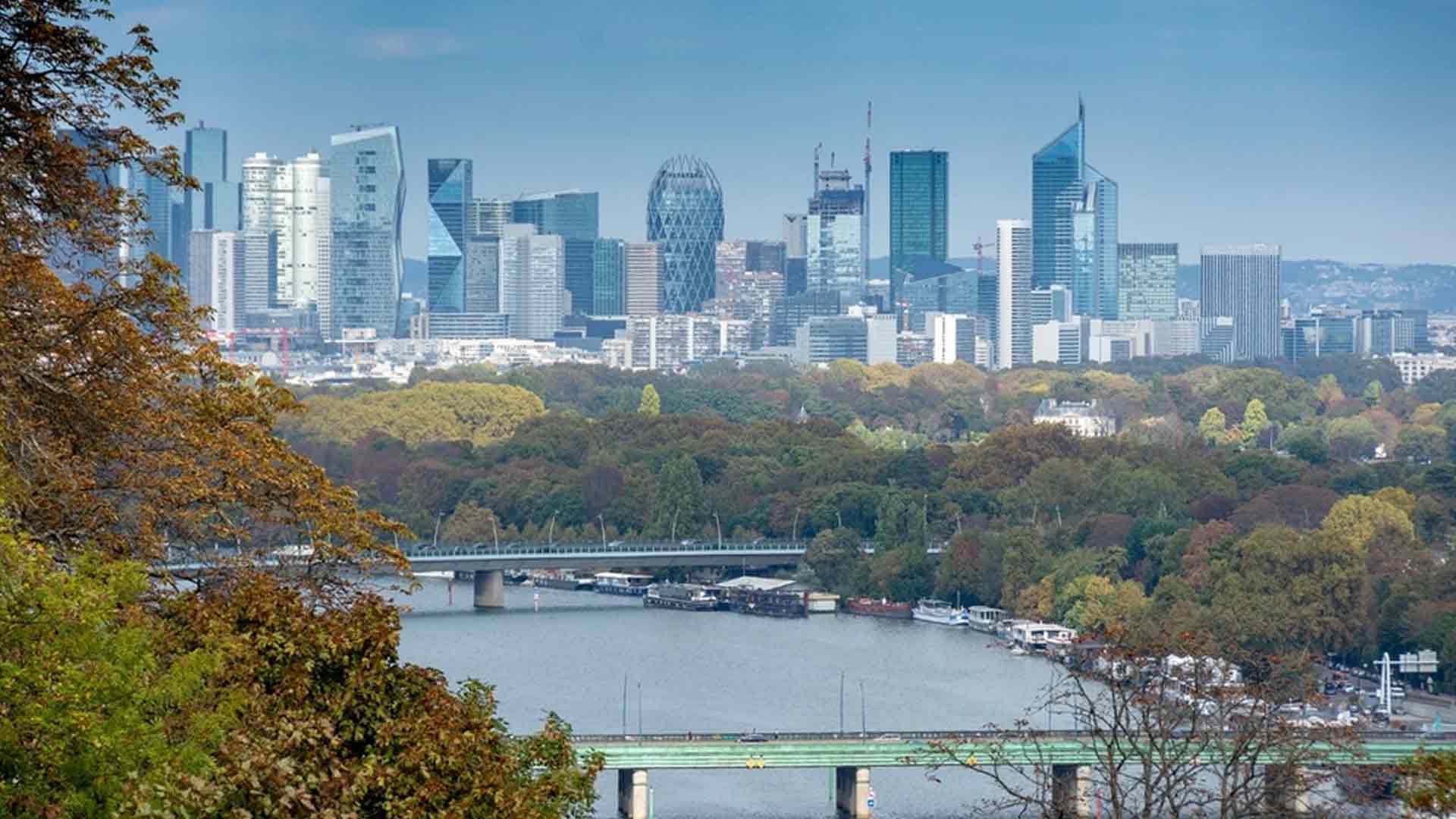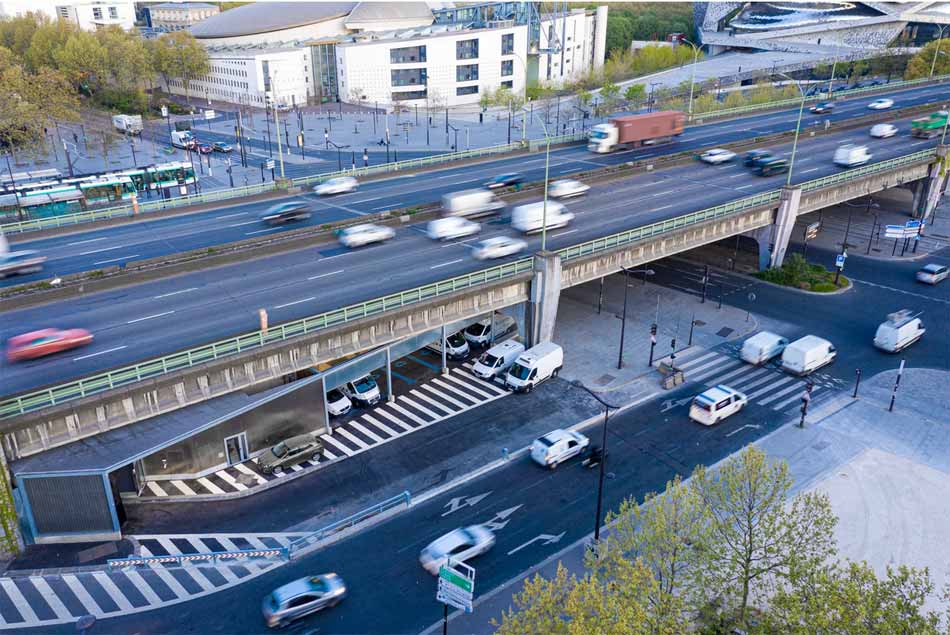
One of today's main challenges is to find a right balance between economic activity and the protection of biodiversity. With that aim in mind, Paris Region has successfully implemented several policies - limiting urban sprawl, encouraging active mobility solutions, decarbonizing the economy, promoting circular economy - to foster better living conditions while addressing the environmental challenges facing communities.
The new ZNLT (Zero Net Land Take) target adopted by France in response to the “No net land take by 2050” goal set by the European Commission seeks to limit land take. This objective reflects a global trend and is part of a broader coordinated action at the international level.
Paris Region is already embracing the goal of the ZNLT, by supporting the repurposing of brownfields and vacant space available, which adds value to the area and creates local jobs.
ZNLT and ZNE: new urban challenges
The objective of the ZNLT implies that any natural, agricultural or forest land (NAF) that is impervious must be compensated by the rewilding of an equal area in order to protect biodiversity. In urban areas, this contributes to better rainwater management, greater access to green spaces for residents and the creation of cold islands. Maintaining a low level of gross land use is essential to achieve this objective.
The ZNLT creates an intrinsic challenge: to prevent land take, the entire real estate industry must comply with the ZNE (Zero net emissions) target.
However, ZNE and ZNLT have different implications depending on the geographical area considered. Regarding Paris Region, one of its notable characteristics is its diversity in terms of population density, i.e., it includes both extremely dense and sparsely populated areas. As such, and to achieve the goals of the ZNLT, the Region offers a range of development and innovation opportunities that take these specific features into account.
Paris Region, an ideal playing ground for ZNLT
The new Grand Paris Express metro project expands Paris Region’s urban area. Construction works around the new metro stops, which will densify these neighborhoods, are opportunities to encourage ZNLT. In fact, the Saclay Plateau’s Nature and Forest Protection Zone (Zone de protection naturelle agricole et forestière du Plateau de Saclay) was enshrined in the 2010 Law on Greater Paris, which set a blueprint for the creation of the Paris-Saclay scientific and tech cluster. This new status protects over 4,500 hectares (11,120 acres) of agricultural and natural land and strictly restricts the anticipated urbanization—over 2 million square meters—to land located around future stations and to urban and industrial brownfields.
3 levers may be activated to build in urban settings while limiting land take:
- Unsealing and rewilding consists in compensating for land taken by restoring other soils to their natural functions. Soils needs to be depolluted, unsealed and nourished. This is a transition process that may take years, depending on the level of rewilding sought.
- Densification consists in building more on a given area. This is well suited for Paris’s immediate surroundings, the “Petite Couronne”. Densification often concerns built land and hence implies no further land take. It may imply building logistics platforms or multi-storey parking lots; raising existing constructions or building in interstitial spaces; etc. The logistics warehouse at the Gennevilliers port, composed of two 30,000 square meters (323,000 sq.ft.) storeys, is a good example of space optimization. This construction, led by Sogaris and developed by Vailog, is currently the only modern vertical warehouse in operation in France. With the P4 project, Sogaris has also begun to look at the use of interstitial spaces between existing buildings that were previously lost to the city and its inhabitants. Located in the 19th arrondissement of Paris, this 800 square meter space (8600 sq. ft.) is dedicated to urban logistics and links Paris to the Seine-Saint-Denis department. This project meets growing logistics needs, strengthens the link between Paris and Pantin and contributes to the climate transition by making the transport of goods to Paris cleaner.
- The use of vacant space consists in utilizing already artificialized land that is not currently used, such as empty businesses or industrial brownfields. According to the latest census, there are at least 2,700 abandoned sites and unoccupied land in Paris Region, amounting to a total of 4,200 hectares (10,400 acres) of brownfield. This area is roughly half the total size of Paris, with brownfields ranging from 100 square meters (1,080 sq. ft.) to 185 hectares (458 acres). 40% of this surface is made up of abandoned green spaces located on the edges of woodland and 20% is construction-free. A sizeable opportunity for investors!

Brownfield – A promising outlook for Paris Region
The repurposing of brownfields is, along with investment around metro stations and the conversion of office space into housing, one of the three main pillars of the IMGP3, the architecture and urban design tender organized by the Métropole du Grand Paris. A good example is the “Quartier des savoirs” project in Guyancourt, which just entered its initial consultation phase: the Paris-Saclay planning agency (EPA, or Établissement public d’aménagement) is currently designing a compact, mixed-use neighborhood around the future Line 18 metro station for which it is repurposing 60 hectares (148 acres) of underutilized and brownfield land to buttress the rest of the development project.
Brownfields, which used to host a broad range of economic activities, are often already well equipped and have pre-existing construction and transportation connections. This is the case of the €150M investment led by Dentressangle in Cergy-Pontoise in the Val d’Oise département. Dentressangle won a bid for a 27-hectare (67 acre-) site owned by Renault which is located at the intersection of the A15 and A104 highways and which the carmaker intends to leave in 2022. This industrial site is slated to be replaced by an 80,000 square meter (861,000 sq.ft.) development dedicated for the most part to logistics and for 6 to 8 hectares (15 to 20 acres) to turnkey property.
epurposing and revitalizing brownfields is one of the main levers to respond to growing housing and business activity demands while limiting land take. Paris La Défense has in fact designed a major redevelopment of the former St Gobain headquarters in partnership with architect Jen Gang. The previous building has been demolished and will be replaced in 2024 by a real estate program offering office space, hotels, housing, and services.
The ZNLT and ZNE objectives create unprecedented investment opportunities in Paris Region.

